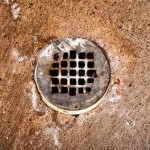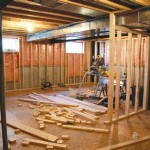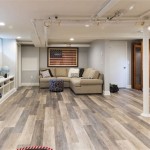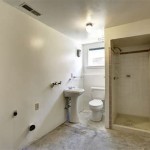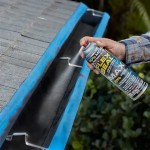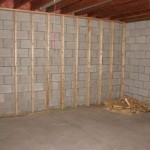Can You Install Engineered Hardwood in a Basement? A Comprehensive Guide
The question of whether engineered hardwood flooring can be installed in a basement is a common one for homeowners considering flooring options for this below-grade space. Basements present unique challenges compared to above-ground rooms, primarily due to potential moisture issues. Engineered hardwood, unlike solid hardwood, is designed to be more dimensionally stable and less susceptible to warping and cupping when exposed to humidity fluctuations. However, successful installation requires careful consideration of several factors and adherence to best practices.
This article will delve into the suitability of engineered hardwood for basement installations, exploring the advantages and disadvantages, necessary preparations, and potential issues that may arise, allowing homeowners to make informed decisions about their basement flooring projects. A focus will also be placed on preventative measures and installation techniques that can mitigate the risk of moisture damage and ensure the longevity and performance of the installed flooring.
Understanding the Moisture Challenges in Basements
Before contemplating any flooring installation in a basement, it's critical to thoroughly assess the moisture situation. Basements are inherently prone to dampness due to their below-grade location. Moisture can penetrate through the concrete foundation walls and slab from the surrounding soil. This moisture can be in the form of water vapor, which increases humidity levels in the basement, or liquid water, which can lead to mold and mildew growth. Sources of basement moisture include hydrostatic pressure from groundwater, rainwater runoff, condensation, and plumbing leaks.
High humidity levels can cause solid hardwood flooring to expand and contract, potentially leading to warping, cupping, and gapping. While engineered hardwood is more resistant to these effects, it is not entirely impervious to moisture damage. Excessive moisture can still cause the layers of the engineered hardwood to delaminate, compromising the structural integrity of the floor. Therefore, identifying and addressing any existing moisture problems is paramount before proceeding with installation.
A simple moisture test involves taping a square of plastic sheeting to the concrete floor. After 24-48 hours, check for condensation under the plastic. If condensation is present, it indicates that moisture is rising through the concrete. More accurate moisture testing can be conducted using a concrete moisture meter, either calcium chloride tests or relative humidity probes. These tests provide quantitative data that can help determine the extent of the moisture problem and inform decisions about necessary remediation measures.
Addressing moisture issues may involve several strategies: improving exterior drainage by ensuring proper grading and gutter systems; applying a waterproof sealant to the exterior foundation walls; installing a vapor barrier on the concrete slab; and using a dehumidifier to control indoor humidity levels. It's crucial to resolve any underlying moisture problems before installing any type of flooring, including engineered hardwood.
Advantages of Using Engineered Hardwood in Basements
Despite the moisture challenges, engineered hardwood offers several advantages that make it a viable flooring option for basements. Its multi-layered construction, typically consisting of a hardwood veneer bonded to a core of plywood or high-density fiberboard (HDF), provides greater dimensional stability compared to solid hardwood. This construction minimizes the expansion and contraction that can occur with changes in humidity. The top veneer provides the aesthetic appeal of real hardwood, while the core provides structural stability and resistance to warping.
Engineered hardwood flooring is available in a variety of thicknesses, widths, and finishes, allowing homeowners to achieve the desired look and feel in their basements. Some engineered hardwood products are specifically designed for basement installations and incorporate features such as enhanced moisture resistance or antimicrobial treatments. These products may have a thicker wear layer, providing greater durability and resistance to scratches and dents. They also often feature a locking system that allows for a floating installation, which further reduces the risk of moisture damage by allowing the floor to move as needed.
Compared to other basement flooring options like carpet, engineered hardwood is generally easier to clean and maintain. It is resistant to stains and spills and can be easily cleaned with a damp mop or cloth. Unlike carpet, engineered hardwood does not provide a breeding ground for mold and mildew, making it a more hygienic choice for basements. Furthermore, it doesn't contain allergens that can impact indoor air quality.
Installation of engineered hardwood can be relatively straightforward, especially with click-lock systems that don't require adhesives. This can make it a feasible DIY project for experienced homeowners. However, professional installation is always recommended to ensure proper subfloor preparation and to avoid potential problems like improper acclimatization or uneven installation.
Essential Preparations and Installation Techniques
Proper preparation is essential for a successful engineered hardwood installation in a basement. The subfloor, which is typically a concrete slab, must be clean, level, and dry. Any cracks or imperfections in the concrete should be repaired using a concrete patching compound. A self-leveling compound may be necessary to create a perfectly flat surface, which is crucial for preventing unevenness and potential damage to the flooring. The subfloor should be thoroughly cleaned to remove any dust, debris, or adhesives.
A vapor barrier should always be installed over the concrete slab before laying the engineered hardwood. This barrier prevents moisture from migrating up through the concrete and damaging the flooring. The vapor barrier should be a continuous sheet of polyethylene film, typically 6-mil or thicker, and should be overlapped at the seams and taped securely. Some engineered hardwood products have an attached underlayment or vapor barrier, simplifying the installation process. However, it's still important to ensure that the subfloor is properly prepared.
Acclimatization is a critical step that is often overlooked. The engineered hardwood flooring should be allowed to acclimatize to the basement's temperature and humidity levels for several days before installation. This allows the wood to adjust to the environment and minimizes expansion or contraction after it is installed. Follow the manufacturer's recommendations for acclimatization time and conditions.
The installation method will depend on the type of engineered hardwood flooring. Floating installations, where the planks are connected to each other but not directly to the subfloor, are generally recommended for basements. This allows the floor to move as needed in response to changes in humidity. Glued-down installations are possible, but require careful selection of a moisture-resistant adhesive and thorough preparation of the subfloor. Nailed-down installations are generally not recommended for basements due to the potential for moisture damage and the difficulty of nailing into concrete.
Properly spacing the planks during installation is also important to allow for expansion and contraction. Follow the manufacturer's recommendations for expansion gaps around the perimeter of the room and around any fixed objects, such as pipes or columns. These gaps should be covered with baseboards or trim after the installation is complete.
After the installation is complete, it is important to maintain proper humidity levels in the basement. A dehumidifier can be used to control humidity and prevent moisture buildup. Regular cleaning and maintenance will also help to prolong the life of the flooring. Avoid using excessive water when cleaning and immediately wipe up any spills. It's also crucial to check for any signs of moisture problems, such as discoloration, warping, or mold growth, and address them promptly.
Choosing the right type of engineered hardwood is also critical. Look for products that are specifically designed for basement installations and that have a proven track record of performance in damp environments. Read reviews and consult with flooring professionals to get recommendations for the best products for your specific basement conditions.

Basement Wood Flooring What You Should Know

Installing Engineered Hardwood On Concrete Twenty Oak

Installing Engineered Hardwood On Concrete Twenty Oak

Do Hardwood Floors Make Sense In A Basement Dave S Floor Sanding

4 Of The Best Options For Basement Flooring In Your Home Reallycheapfloors America S Cheapest Hardwood

The Best Wood Flooring For Basements Carlisle Wide Plank Floors

How To Install Engineered Hardwood Floors 4 Easy Installation Options

How To Install Engineered Hardwood Over Concrete Flooring Experts Com

The One Secret To Installing A Wood Floor In Finished Basement Svb

Wood Flooring In The Basement Hgtv
